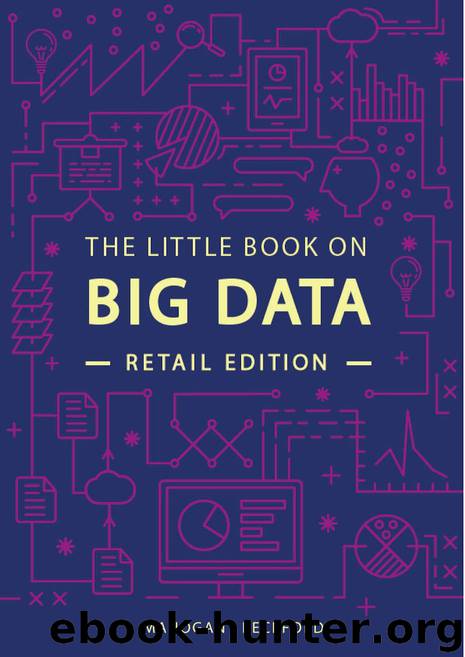The Little Book on Big Data: Understand Retail Analytics Through Use Cases and Optimize Your Business by Mahogany Beckford

Author:Mahogany Beckford
Language: eng
Format: azw3, epub
Published: 2016-02-26T08:00:00+00:00
Brooks Bothers
In 2001, Brooks Brothers made the news with its introduction of a new service that helps customers get the perfect fit5. Its “computer tailoring” technology uses lasers to scan a customer’s body and then transmits the very precise measurements (accurate to one-hundredth of an inch) to a computer, making a file for each customer. Then, an expert in-house team will use the data gathered, along with customer style options (i.e. - choice of collar, fabric, colors, et cetera), to cut a suit that is promised to have an amazing fit. One journalist described the process of being scanned as feeling like a Disney experience where the comfort, smoothness, and dazzle of it left him “feeling entertained and even special”6. Initially, the service was targeted towards Brooks Brothers’ core customers - men. When news of the technology spread, however, women also began lining up to be scanned.
The Brooks Brothers case study is a really good example of a retailer creating a highly unique and highly beneficial reason for customers to enter its brick-and-mortar location, and the technology behind the experience is not proprietary. This same computer tailoring technology first hit the public in 1999 when Levi Strauss installed a body scanner at one of its stores in a city that is known for its appreciation of technology - San Francisco. There, it was used to help customers get a great fit in the jeans that they bought. Victoria’s Secret is another company that is using the scanners in its retail locations. It is calling the scanners “Body Match” technology, and the scanners are helping women find the best-fitting bras within the Victoria’s Secret collections.
Brooks Brothers’ intention with the technology (and perhaps the other retailers’ as well) was to:
improve the customer experience by reducing the number of times a customer needed to be fitted for an item that would fit them well.
simplify the reordering process since having data points for an entire body meant that the store could easily cut additional garments that were not included in the first order.
reduce the size of the inventory that it needed to have in-stock because with the efficiency of the technology, the retailer could better anticipate its stocking needs and optimize its inventory accordingly6.
Download
The Little Book on Big Data: Understand Retail Analytics Through Use Cases and Optimize Your Business by Mahogany Beckford.epub
This site does not store any files on its server. We only index and link to content provided by other sites. Please contact the content providers to delete copyright contents if any and email us, we'll remove relevant links or contents immediately.
| Bookkeeping | Business Mathematics |
| Business Writing | Communications |
| Decision Making | Negotiating |
| Project Management | Running Meetings & Presentations |
| Secretarial Aids & Training | Time Management |
| Training |
Nudge - Improving Decisions about Health, Wealth, and Happiness by Thaler Sunstein(7546)
Deep Work by Cal Newport(6855)
Principles: Life and Work by Ray Dalio(6176)
Factfulness: Ten Reasons We're Wrong About the World – and Why Things Are Better Than You Think by Hans Rosling(4675)
The Doodle Revolution by Sunni Brown(4667)
Eat That Frog! by Brian Tracy(4409)
Thinking in Bets by Annie Duke(4140)
Hyperfocus by Chris Bailey(4031)
Visual Intelligence by Amy E. Herman(3710)
Writing Your Dissertation in Fifteen Minutes a Day by Joan Bolker(3660)
How to Win Friends and Influence People in the Digital Age by Dale Carnegie & Associates(3483)
Ogilvy on Advertising by David Ogilvy(3482)
Hidden Persuasion: 33 psychological influence techniques in advertising by Marc Andrews & Matthijs van Leeuwen & Rick van Baaren(3454)
How to win friends and influence people by Dale Carnegie(3382)
The Pixar Touch by David A. Price(3344)
Schaum's Quick Guide to Writing Great Short Stories by Margaret Lucke(3304)
Deep Work: Rules for Focused Success in a Distracted World by Cal Newport(3127)
Work Clean by Dan Charnas(3035)
The Slow Fix: Solve Problems, Work Smarter, and Live Better In a World Addicted to Speed by Carl Honore(2939)
